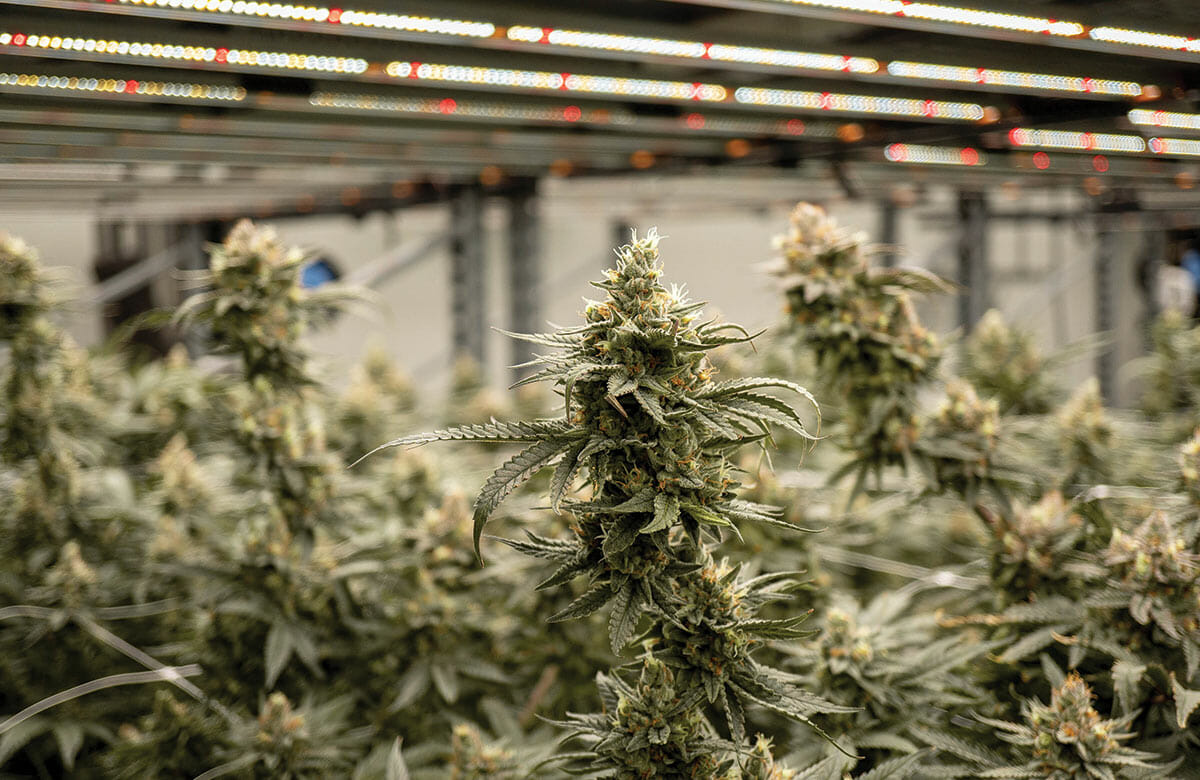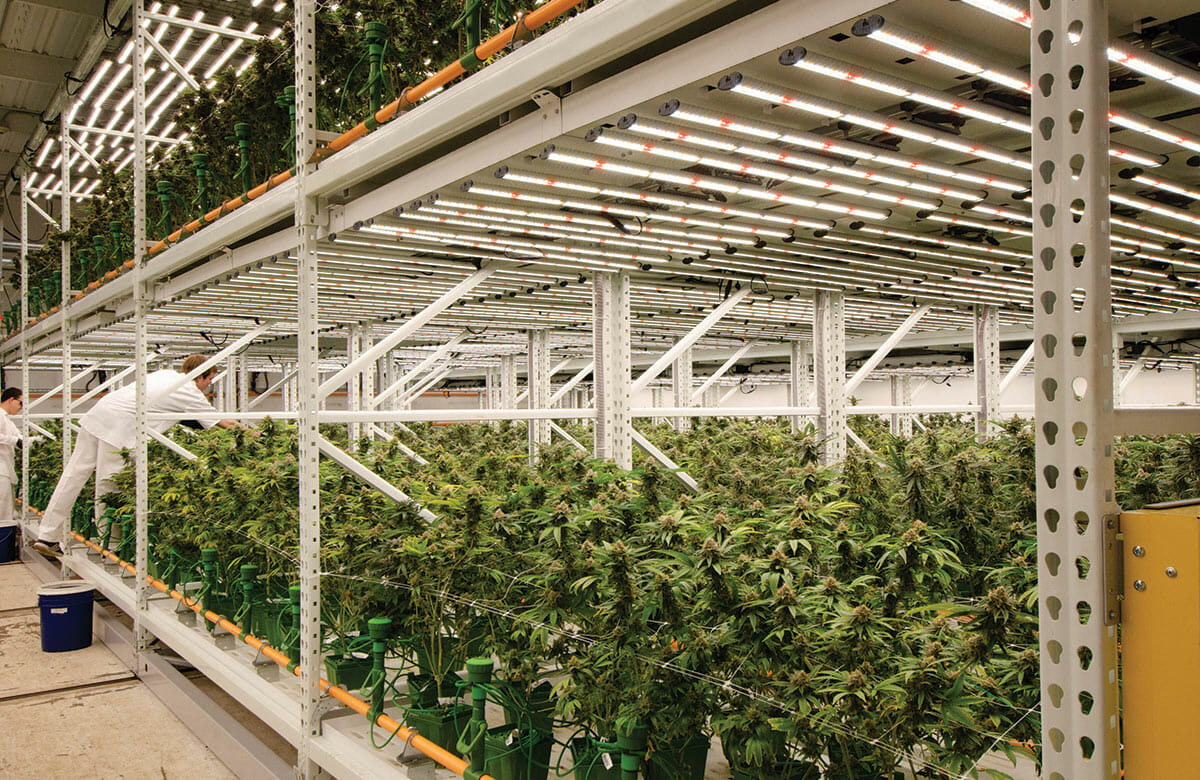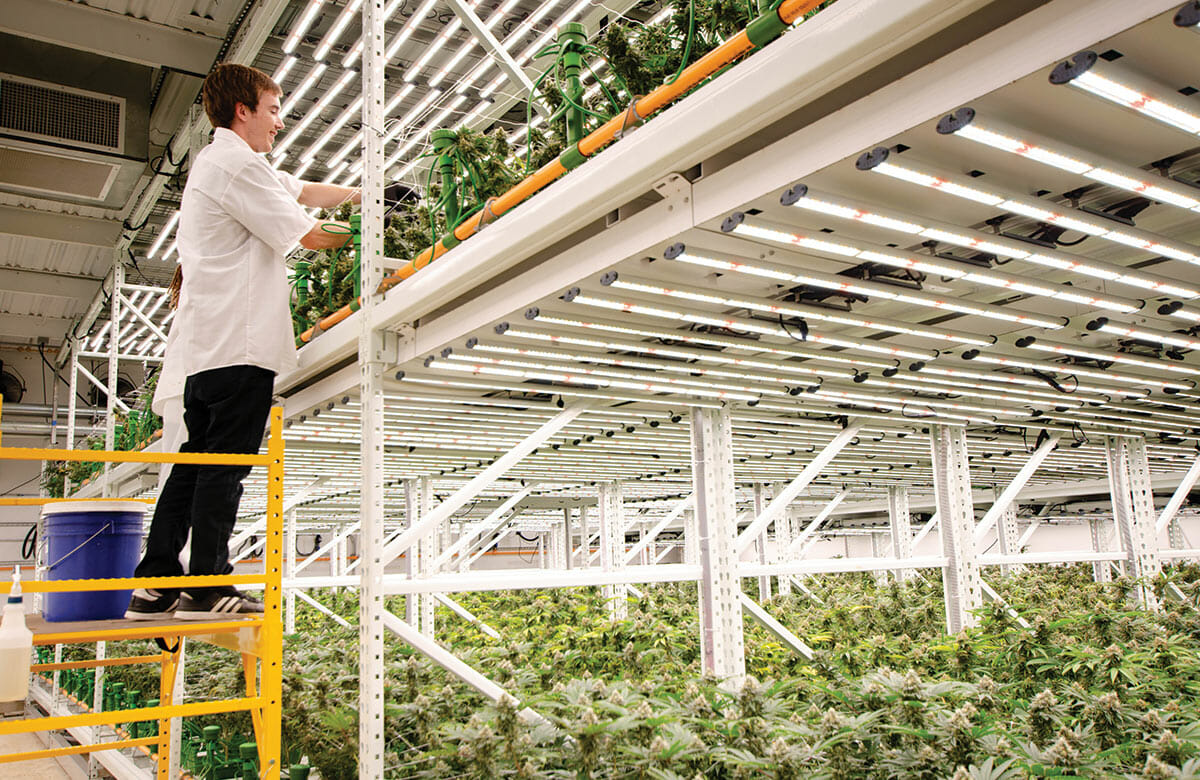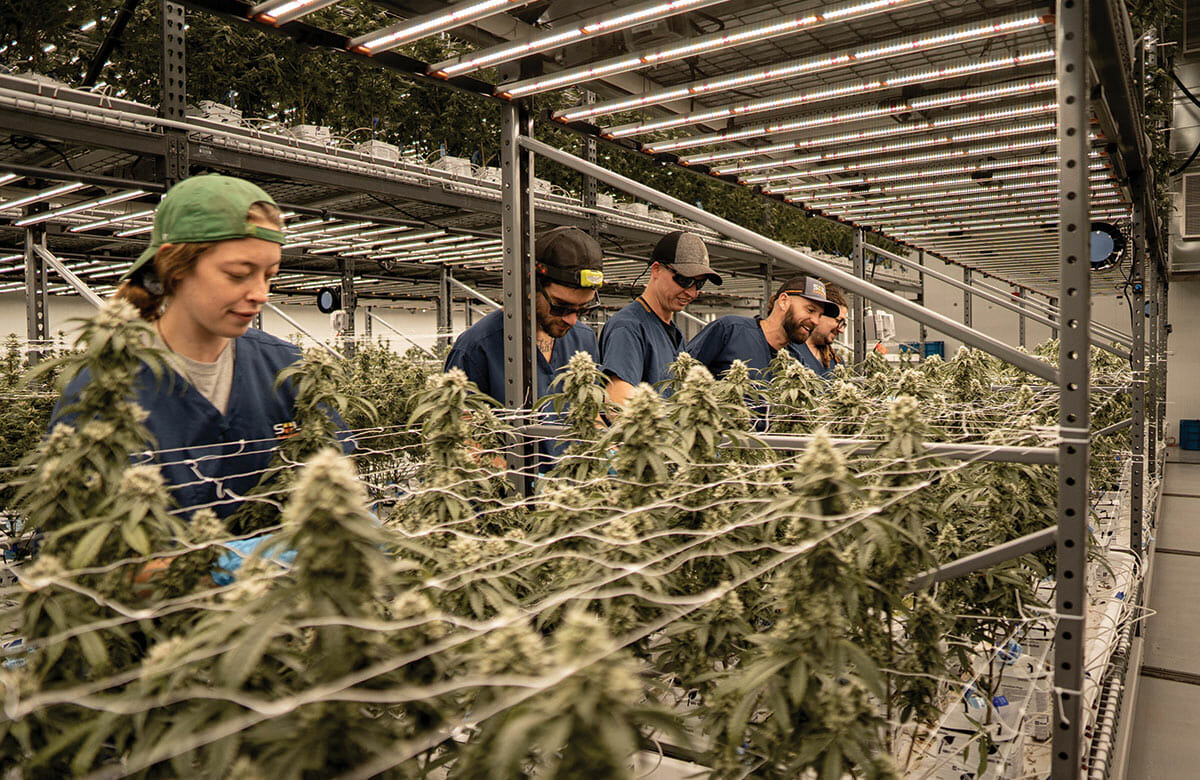
19 Mar Terms to know when adjusting your environment in cannabis production
Cannabis cultivation requires precise and diligent management of all aspects of the controlled growing environment. Of the different environmental factors which influence the production of cannabis, lighting is by far one of the most important to adjust and control as it impacts other parameters. Fluence’s horticulture service expert in cannabis cultivation, Sean Sangster, created the Adjusting Your Environment webinar to help growers understand the importance of lighting and the various key factors which will help them maintain and adjust their lighting to achieve the best possible plant yields and crop quality.
Key Environmental Factors for Growing Cannabis
The webinar discusses when considering a light source for the cultivation of cannabis, how the quantity, quality and duration of the light are all key factors that influence a cannabis plants’ growth and development (see Figure 1).
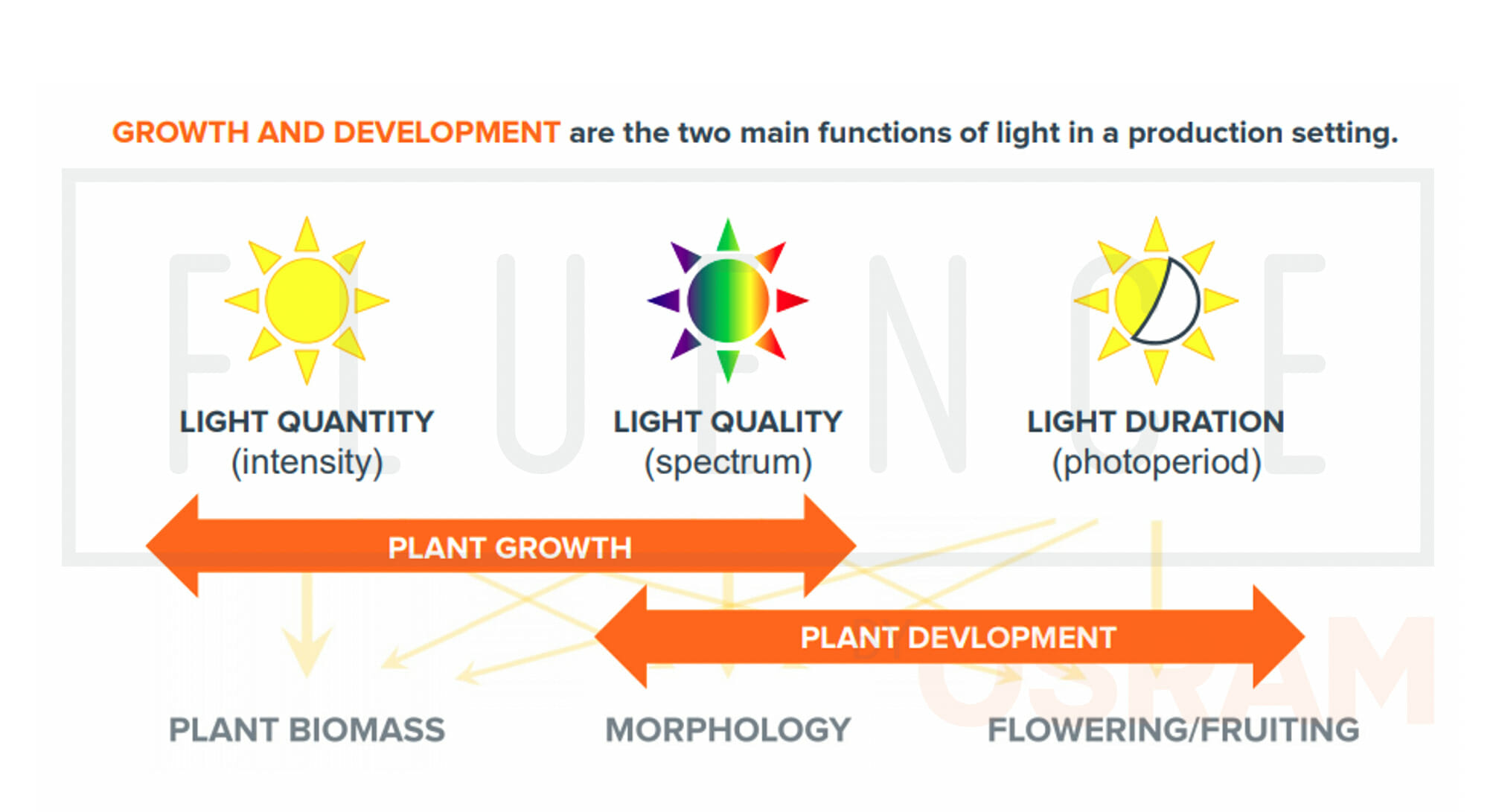
PPFD and DLI are two of the first key concepts which are integrally important to understanding how to best adjust your environment. Sangster illustrates the difference between PPFD and DLI in a simple graphic, see Figure 2. As depicted the in graphic, PPFD, or photosynthetic photon flux density, measures the number of photons from a light source at a given time. DLI, or daily light integral, measures the amount of light over a period of time. It is important for cultivators to be measuring both PPFD and DLI as the fluctuations in light have a direct impact on your environmental parameters.
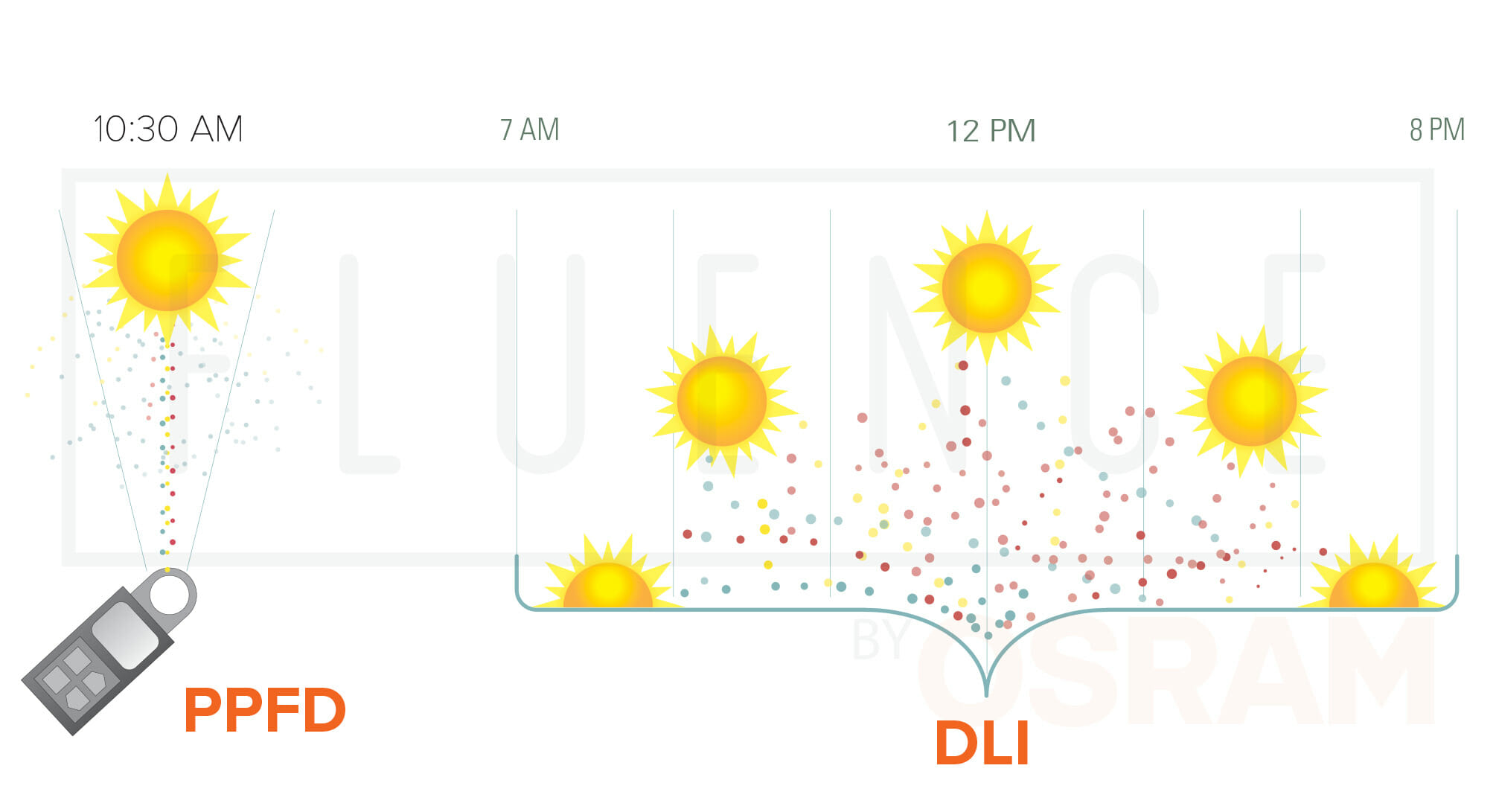
Two of these environmental parameters include temperature and CO2 which can be limiting to plant production if not managed properly. With Fluence LED solutions, the higher light intensity can cause an increase in CO2 consumption. Because of this, be sure to manage and monitor your supplementation of CO2 appropriately. Fluence LED lights do not produce a significant amount of heat, be sure to adjust your HVAC units to maintain proper temperatures in your growing facility.
Under high PPFD, transpiration is another vital factor to watch for. To ensure plants can flourish, Fluence recommends carefully monitoring leachate EC nutrient solutions, and carefully strategize water irrigation events to avoid yield reductions.
Finally, VPD (Vapor Pressure Deficit) is a convenient and important metric to monitor in an environment, which Fluence discusses in-depth, in the webinar.
Growing for Success
By adjusting your environment to eliminate limiting factors under high PPFD, growers can greatly increase yields of their cannabis crops. The Adjusting Your Environment webinar can teach you how to do this, as well as address key questions you may have, such as:
To learn other highly relevant research insights and best practices that will help you increase your crop yields, tune in to the Adjusting Your Environment webinar now.




